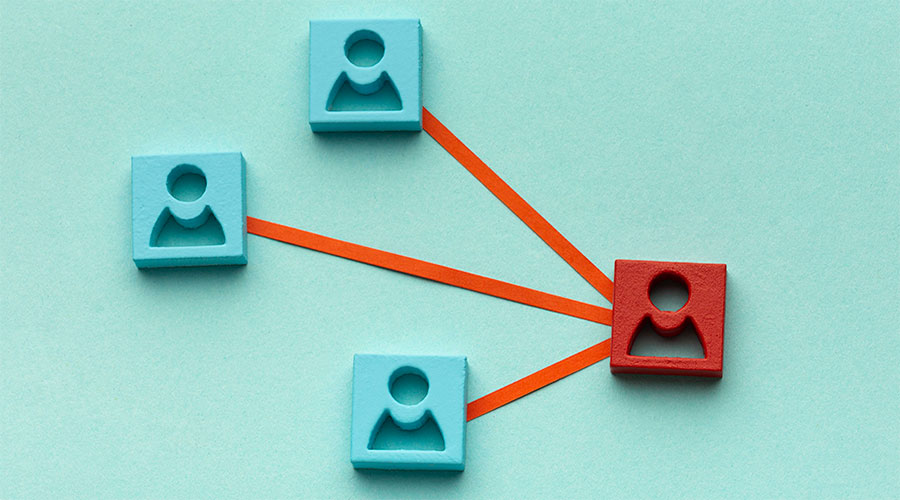Do you have a platform that helps marketers grow their business? If so, let's talk about it in our professional marketing community. Learn More
Building Strong Agency-Client Connections
Originally published: December 18, 2023 06:44:19 AM, updated: December 18, 2023 06:49:29 AM

Did you know businesses with strong client relationships are 67% more profitable than those without? From a financial point of view, it is more than clear you'll want to keep your clients happy and satisfied.
But it's not just about transactions; it's about creating a bond that propels both parties toward success. Relationships matter as much as the product or service you offer in the business world.
What is an Agency-Client Relationship?
This critical dynamic is defined by the nuanced interplay between agencies and clients, shaping a collaborative partnership that extends beyond mere transactions. The significance of this relationship lies in its central role in steering businesses towards their objectives.
As a cornerstone for success, the Agency-Client Relationship is a strategic conduit for achieving business goals. This framework's collaborative synergy and mutual understanding lay the foundation for effective communication, trust-building, and transparent exchanges.
It's not just about meeting immediate needs; it's about cultivating a symbiotic alliance that propels both parties toward sustained success.
The Four Cornerstones of a Strong Relationship
The four core pillars - Respect, Communication, Trust, and Transparency - constitute the foundational infrastructure of a solid agency-client relationship. Evoking parallels with a strategic partnership, ongoing dialogue, symbiotic reliance, and open information exchange characterize this alliance.
Respect: Mutual Appreciation for Expertise
In agency-client dynamics, fostering mutual respect involves recognizing and valuing each party's expertise. Consider it akin to a harmonious collaboration, wherein the agency contributes its specialized skills while the client brings industry-specific insights.
In a tangible agency-client relationship, demonstrating respect manifests in various ways. Take, for instance, collaborative brainstorming sessions where the agency team actively seeks and values the client's input, acknowledging their domain knowledge. This isn't merely a checkbox exercise but a genuine integration of perspectives, aligning the agency's strategies with the client's vision.
Moreover, when the client witnesses the agency not only delivering on promises but exceeding expectations, it solidifies the foundation of respect. It's akin to a well-orchestrated performance, where the agency's expertise becomes a service rendered and a testament to a shared commitment to excellence.
Communication: A Strategic Exchange Beyond Verbal Articulation
Communication within the agency-client paradigm transcends mere conveyance of information; it forms the very pulse of the relationship. Leveraging clear verbal communication is analogous to strategic dialogue and the lifeblood of collaborative endeavors.
Regular updates and progress reports are strategic waypoints in this ongoing dialogue, signifying a commitment to shared business & strategic goals. Active listening, within this context, elevates communication beyond unilateral discourse, facilitating a more profound exchange of ideas and perspectives.
Furthermore, communication materializes in open forums for constructive feedback. The agency doesn't merely present results; they invite the client into a dialogue, creating an environment where suggestions are welcomed and actively sought.
The reciprocal exchange transforms the relationship from a transactional engagement to a collaborative journey where ideas flow seamlessly. By recognizing and valuing the client's insights, the agency doesn't just position itself as a service provider but as a strategic ally, attuned to the client's aspirations and challenges.
Trust: A Foundation Forged Through Consistency and Honesty

Trust, a foundational element, serves as the adhesive that fortifies the agency-client alliance. Like entrusting a valued possession to a friend, the agency-client relationship relies on consistent performance and honesty.
Let's consider the first pillar: building trust through consistent performance. Imagine an agency consistently delivering exceptional results, meeting or exceeding key performance indicators month after month.
For example, a digital marketing agency might consistently boost a client's online visibility, increasing website traffic and engagement. Reliability becomes the cornerstone upon which trust is built - a track record of success that speaks volumes, fostering a sense of confidence in the agency's capabilities.
Moving on to the next facet, honesty about capabilities and limitations. Picture a scenario where an agency, during the onboarding phase, transparently communicates the scope of its expertise and, equally crucial, its limitations. Honesty is a vital step in setting realistic expectations.
Now, let's delve into the third aspect: demonstration of reliability and accountability. Imagine a situation where the agency not only meets deadlines consistently but takes responsibility for any unforeseen challenges that may arise.
A public relations agency facing a sudden change in market dynamics promptly adjusts its strategy and communicates the necessary pivots to the client. Demonstrating reliability and accountability reassures the client that the agency is not just a service provider but a proactive partner invested in shared success.
Transparency: The Illumination of Operational Dynamics
Transparency emerges as the illuminating force that allows both parties to navigate the operational landscape with clarity. It's like having a crystal-clear window through which the inner workings of the collaboration are laid bare.
It all begins with the open sharing of information. Imagine an agency that proactively communicates its methodologies, strategies, and the rationale behind decision-making.
Moving on to the delineation of clear expectations and deliverables. Picture a scenario where a content marketing agency, right from the project's initiation, outlines in meticulous detail what the client can expect regarding timelines, milestones, and final deliverables.
Everything is out in the open, from a QR code generator they'll use to create the codes to share on social media to its content calendar, allowing the client insight into upcoming campaigns and themes.
A software development agency may provide a roadmap, breaking down each development phase and expected timeline. Clarity aligns both parties on the journey ahead and minimizes misunderstandings, contributing to a more streamlined collaborative process.
Strategies for Fostering Strong Connections
Strategies like regular check-ins and collaborative goal-setting contribute to building and maintaining strong connections in agency-client relationships. Using various agency tools for team integration and continuous improvement transforms a business partnership into a resilient and collaborative alliance that thrives in the face of challenges and celebrates shared successes.
Regular Check-Ins: Nurturing the Pulse of Collaboration
Regular check-ins act as the heartbeat of a thriving agency-client relationship. These scheduled meetings extend beyond mere status updates; they serve as dedicated forums for in-depth discussions, proactive problem-solving, and strategizing.
Tools like project management platforms such as Asana or Trello can streamline these interactions, ensuring that both parties are on the same page regarding project timelines and milestones.
Take, for example, a branding agency that holds bi-weekly video conferences to discuss ongoing campaigns, address potential roadblocks, and brainstorm creative solutions. Such intentional check-ins go beyond the transactional nature of business, fostering a deeper, more personal connection.
Collaborative Goal Setting: Aligning Visions for Success

Collaborative goal setting is the compass that guides the agency-client ship toward shared success. This involves aligning agency and client objectives, establishing measurable goals, and defining key performance indicators (KPIs).
Project management tools like Monday.com can help visualize these goals, ensuring everyone is on the same page. For instance, a digital marketing agency might collaborate with a client to set objectives like increasing website traffic by 20% in the next quarter.
Continuous evaluation, facilitated by analytics tools such as Google Analytics, allows for real-time assessment and adaptation of strategies, ensuring that the ship stays on course amid changing seas.
Team Integration: Forging Connections Across Organizations
Team integration goes beyond the immediate agency-client interaction, encouraging cross-team collaboration and building relationships at various organizational levels.
Tools like Slack or Microsoft Teams can facilitate seamless communication, breaking down silos between teams. A B2B SaaS agency might create shared channels for both teams and use Slack for customer support, enabling instant communication and collaboration on ongoing projects.
By fostering a sense of unity and shared purpose, team integration transforms the agency-client dynamic from a transactional relationship to a cohesive partnership, where collective efforts drive success.
Continuous Improvement: A Dynamic Approach to Success

Continuous improvement is the engine that propels the agency-client relationship forward. It involves soliciting and incorporating feedback using tools like SurveyMonkey or client feedback forms.
A content marketing agency might regularly seek input from the client regarding content effectiveness and audience engagement. Adapting to changing needs and market dynamics is facilitated by staying agile, using tools like Scrum or Kanban boards for project management.
Learning from both successes and setbacks is crucial; analytics tools can provide insights into what worked and what didn't. For example, the success of a social media advertising campaign might prompt the agency to replicate its strategy. In contrast, a less successful campaign could be a valuable learning opportunity for future endeavors.
Final Words on Agency-Client Connection
Building strong agency-client connections is not just about financial savvy; it's a strategic necessity. The four core pillars - Respect, Communication, Trust, and Transparency - form the foundation, enhancing collaboration. These pillars are more than just conceptual frameworks; they become actionable strategies through regular check-ins, collaborative goal setting, team integration, and continuous improvement.
Join over 45,000 digital marketers. We provide a community for marketers to promote content and build professional branding. Join Now
578 Million Users
If you are a business owner or a marketing professional and want to target the MENA region (Arabic audience) to promote your business to nearly 578 million users, you are lucky you found us. We can work as an extension of your marketing team to manage the Arabic content and open the door for you.


